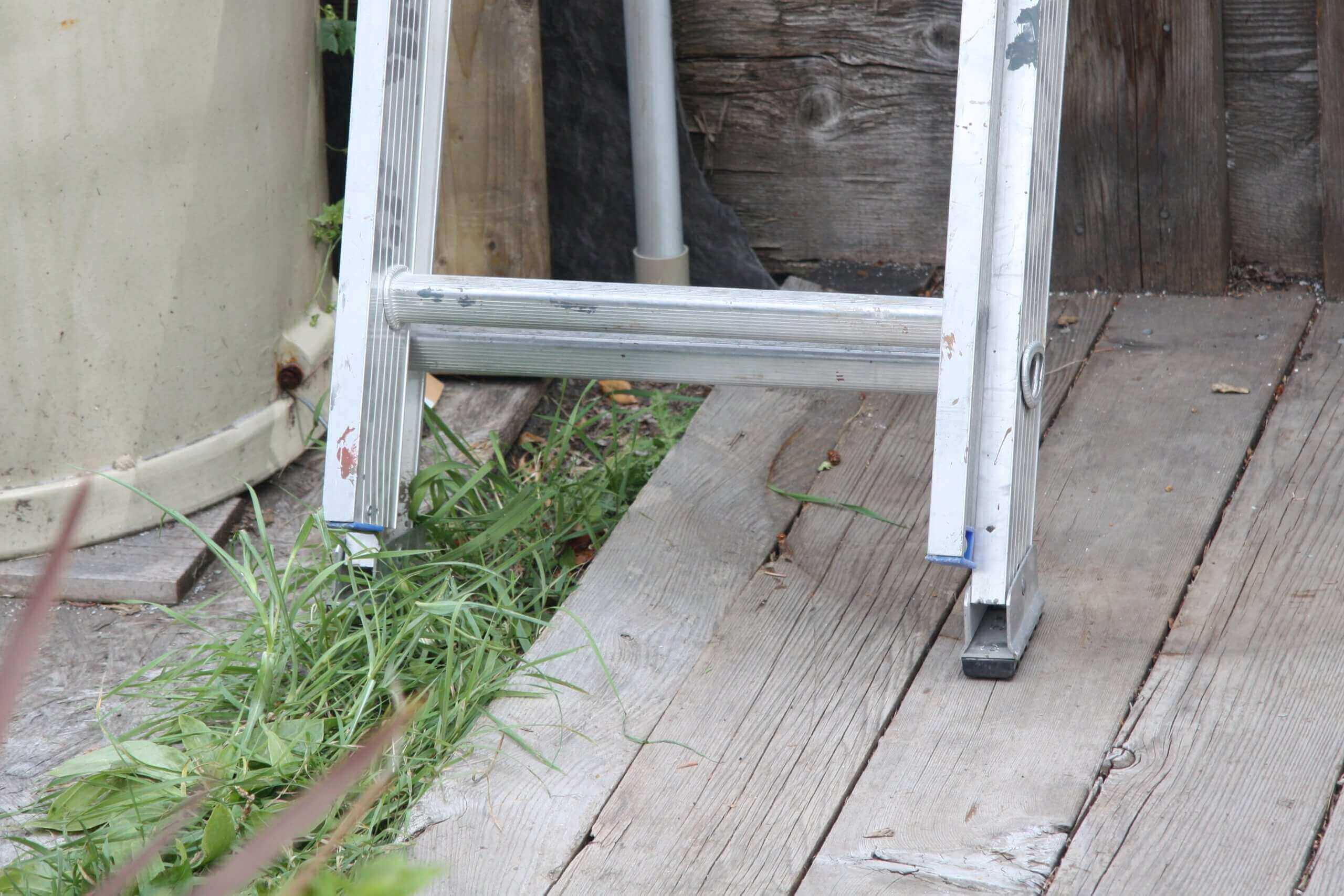With spring approaching, Canadians may see the warmer weather as an opportunity to maintain eavestroughs and roofs, take down holiday lights or patch up paintwork. As such, many of us will be dusting our ladders off and climbing up high. However, unintentional falls from a high level can cause significant injury. In fact, in 2018 over 3600 Canadians were hospitalized due to falls from ladders or scaffolding. Health Canada and the US Consumer Product Safety Commission are familiar with these risks and have implemented requirements for consumer portable ladders in the form of standards. Both the CSA Z11 standard and the ANSI A14.5 define the industry best practices for portable ladders. Despite this attempt to ensure the quality of consumer portable ladders, ladder injuries can still occur due to failures and misuse.

Most common ladder failures occur when a ladder with pre-existing damage is used. Damage or wear can occur over time and issues like bent or broken hinges, spreaders or spreader stops, buckled or bowed legs, corrosion, or loose hardware can be signs that the ladder is beyond its service life and susceptible to failure during use.
Ladders may also fail with a material failure of the ladder’s structural components, although these occurrences are rare because the standards specify design requirements to prevent such failures (so use a CSA approved product!).
Ladders can be overloaded if a user exceeds the capacity for what they were designed for, or if the use load is improperly distributed, such as when they are used on uneven ground or when excessive torque or twisting of the ladder occurs, altering the load distribution between the ladder legs. Just like any structural failure, ladders may also fail if there is a defect in the material or manufacturing. For example, poor quality materials may introduce stress concentrations, such as inclusions or voids, into the continuity of the material, rendering a ladder susceptible to failure. Or, failure of locking pins or mechanisms that maintain the shape and structure of collapsible ladders during use may be a manufacturing defect resulting in ladder failures causing injury. Another example of a manufacturing defect causing failure may occur when the ladder feet (pads under the ladder support legs) are missing or of improper material, increasing the possibility of the ladder slipping out during use.
Even when a ladder does not fail, injury can occur if ladders are improperly used. Climbing above the ladder’s highest maximum-step rating, not maintaining three-points of contact, or excessive leaning while using the ladder can put a user off balance, and susceptible to falls. A user can also be thrown off balance if the ladder is used on uneven surfaces, or if climbed with aggressive horizontal loading of the ladder rungs (by the hands for example) this can rack or twist the ladder such that only three of the four ladder legs are grounded. Although it is unlikely that a racking or twisting of the ladder in this way will cause a failure of the ladder, it may cause instability in the user if the ladder all of a sudden tips slightly as it shifts the few centimetres down on the previously raised leg with user movement. A helper on the ground stabilizing the ladder can help with many balance-related ladder misuses.
Proper ladder setup is also crucial in preventing falls and injuries. Extension ladders should be placed on stable, level ground approximately ¼ of the ladder’s working length (distance to top support point) from the base of the wall or structure. They should also extend above the top support point by at least 1 meter.
Common sense when using a ladder should always be considered. Do not erect ladders on top of boxes, platforms or other elevated surfaces, and do not place ladders against flexible or moveable surfaces. Ensure that you are clear of any overhead electrical equipment when using the ladder, and wear stable, grippy footwear. Lastly, ensure that only one person is using the ladder at a time.
At CEP Forensic, we can investigate injuries from ladders both from a technical or biomechanical perspective. Specifically, we can examine an incident ladder to determine whether it conforms to applicable standards or whether it suffered failure or misuse. A fractured or damaged ladder can be assessed from a materials perspective to determine whether the ladder was overloaded, or whether a pre-existing or manufacturing defect contributed to the failure. We can also conduct a biomechanical injury assessment to identify whether injuries being claimed are consistent with a ladder injury as described by the incident circumstances.
For more information on this topic, please contact one of our Materials and Metallurgical or Biomechanical and Injury expert at 877 686-0240 or info@cep-experts.ca.
